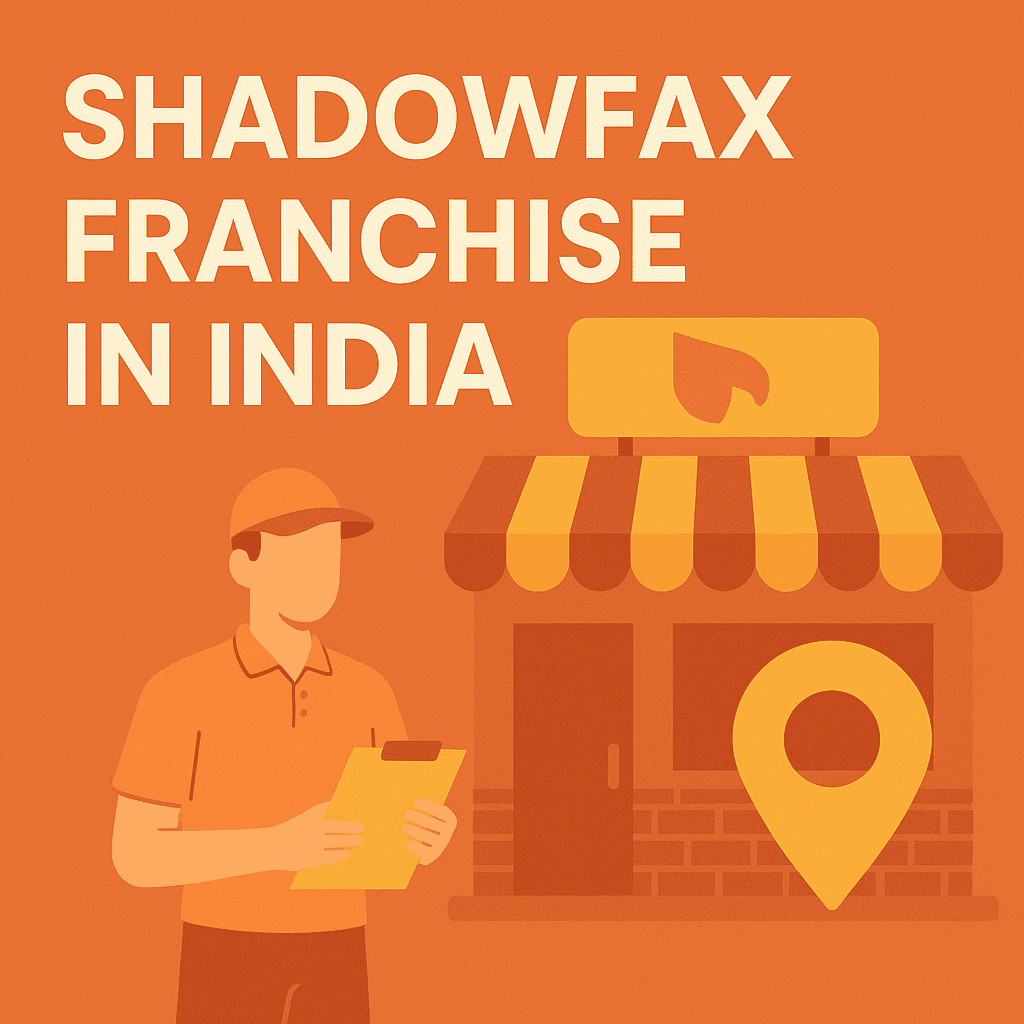Shadowfax Franchise in India: Your Complete 2025 Guide to Investment, Profit & Process

India’s e-commerce market is exploding—projected to hit $350 billion by 2030. In this boom, Shadowfax has emerged as a leading crowdsourced logistics platform, handling over 2 million daily deliveries for giants like Flipkart, Swiggy, and Amazon. For entrepreneurs, a Shadowfax franchise (officially called a Shadowfax Partner Hub or SPH) offers a low-investment entry into this $380 billion logistics sector. Unlike generic “franchise guides,” this 2025 deep dive analyzes real profit scenarios, hidden costs, and operational pitfalls—based on current franchisee interviews and market data.
Why Shadowfax? The Unbeatable Logistics Ecosystem
1. Market Dominance & Clientele
- 15,000+ PIN codes across 750+ cities.
- Key Partners: E-commerce (Flipkart, Myntra), food delivery (Swiggy, Zomato), pharmacies (Apollo), and D2C brands.
- 2025 Edge: Shadowfax’s AI-powered “Pathfinder” tech reduces delivery time by 30%—critical for quick commerce (q-commerce).
2. The Franchise Model: How SPH Works
As a franchisee, you operate a micro-warehouse (300-500 sq. ft.) acting as a local command center:
- Your Role: Manage pickup/drop-offs, train delivery partners, and oversee daily operations.
- Shadowfax’s Role: Provide tech, clients, branding, and operational support.
- Revenue Model: Earn per package delivered + bonuses for high-performance hubs.
Investment Breakdown: ₹5–10 Lakhs (Detailed Cost Table)
Here’s the realistic 2025 investment—verified with active franchisees:
| Expense Category | Cost Range (₹) | Key Details |
|---|---|---|
| Franchise Fee | 1,00,000–2,00,000 | One-time, non-refundable |
| Security Deposit | 50,000–1,00,000 | Refundable after contract |
| Infrastructure Setup | 2,00,000–3,50,000 | Rent advance, renovation, signage, furniture |
| Operational Equipment | 50,000–1,00,000 | Computers, printers, scanners, weighing machines |
| Working Capital | 1,00,000–2,00,000 | Covers 3 months of staff salaries & utilities |
| Total Initial Investment | ₹5,00,000–₹9,50,000 | Varies by city tier |
Hidden Costs & Financing Solutions
- Rider Attrition: 20–30% monthly churn requires constant recruitment.
- Tech Upgrades: Annual hardware updates (₹20,000–₹40,000).
- Funding Options: Explore business loans without collateral for working capital.
Profit Potential: Can You Earn ₹50K/Month?
Revenue Streams Decoded
- Per-Parcel Fee: ₹5–₹20/package (depends on size/distance).
- Peak-Hour Incentives: +₹3–₹5/order during festivals/sales.
- Value-Added Services: Packaging (₹10–₹50/order), storage fees (₹100/day/pallet).
Monthly Profit Calculation
| Scenario | Low Volume (200 orders/day) | High Volume (500 orders/day) |
|---|---|---|
| Revenue | ₹60,000 (₹10/order avg.) | ₹1,50,000 |
| Expenses | ₹45,000 (rent, staff, bills) | ₹1,00,000 |
| Net Profit | ₹15,000 | ₹50,000 |
*Note: Top-performing hubs in metros (Delhi, Mumbai) hit ₹70K/month during Diwali/Sale seasons.*
Step-by-Step Setup Process (2025 Update)
- Eligibility Check:
- Commercial space (300–500 sq. ft.) in high-demand zones (e.g., near markets/IT parks).
- Basic digital literacy (to use Shadowfax’s app).
- Investment capacity: ₹5 lakhs minimum. Tip: Explore zero-credit-score loans if needed.
- Application & Approval:
- Apply via Shadowfax Franchise Portal.
- Location vetting: Shadowfax checks area demand, competition, and accessibility.
- Hub Setup:
- 5–7 days for branding, tech installation, and staff training (2–3 employees required).
- Go-Live & Scaling:
- Start with 50–100 orders/day; scale to 500+ in 6 months with local business tie-ups.
5 Undeniable Benefits (vs. Competitors like Dunzo or Delhivery)
- Lower Royalty: 0% royalty on orders (unlike rivals charging 5–10%).
- Guaranteed Order Flow: Priority access to Shadowfax’s enterprise clients.
- Tech Advantage: Real-time tracking, automated dispatch, and AI route optimization.
- Training Support: 1-week onboarding at regional offices.
- Marketing Leverage: Co-branded campaigns with Swiggy/Flipkart during festivals.
3 Big Challenges & Solutions
- Rider Management
- Problem: High attrition due to gig-work fatigue.
- Fix: Offer incentives (₹500/week for 100+ on-time deliveries).
- Location Risks
- Problem: Low orders in Tier 3 cities.
- Fix: Target areas with 5,000+ households or office clusters.
- Competition
- Problem: Rival hubs undercutting per-parcel fees.
- Fix: Partner with local D2C brands for exclusive deals.
FAQs: Quick Answers to Critical Questions
Q1: Is Shadowfax profitable for small towns?
*Yes, but target cities with 500,000+ population (e.g., Jaipur, Coimbatore) for 300+ orders/day.*
Q2: What’s the contract period?
*3 years, renewable. Exit clause: 3-month notice + security deposit refund.*
Q3: Can I run this part-time?
*No. Requires 10–12 hours/day supervision.*
Q4: How many riders do I need?
*1 rider per 50 orders/day. Start with 4–5.*
Q5: Does Shadowfax provide vehicles?
No. Riders use personal bikes (you assist with onboarding).
Q6: What’s the break-even time?
*6–8 months with 300+ daily orders.*
The Verdict: Is a Shadowfax Franchise Worth It in 2025?
Yes—if you’re in a Tier 1/2 city with high e-commerce penetration. With ₹5–10 lakhs, you can tap into India’s hyperlocal delivery surge, earning ₹3–6 lakhs/year after breakeven. Shadowfax’s tech and client network reduce startup risks, but success hinges on:
- Location selection (avoid oversaturated areas).
- Rider retention strategies (bonuses, flexible shifts).
- Local partnerships (tie-ups with nearby restaurants/stores).
For entrepreneurs ready to grind, this franchise is a scalable gateway into India’s logistics boom.
Ready to apply?
Visit Shadowfax Franchise Portal or call their partner team at 1800-123-6000.





